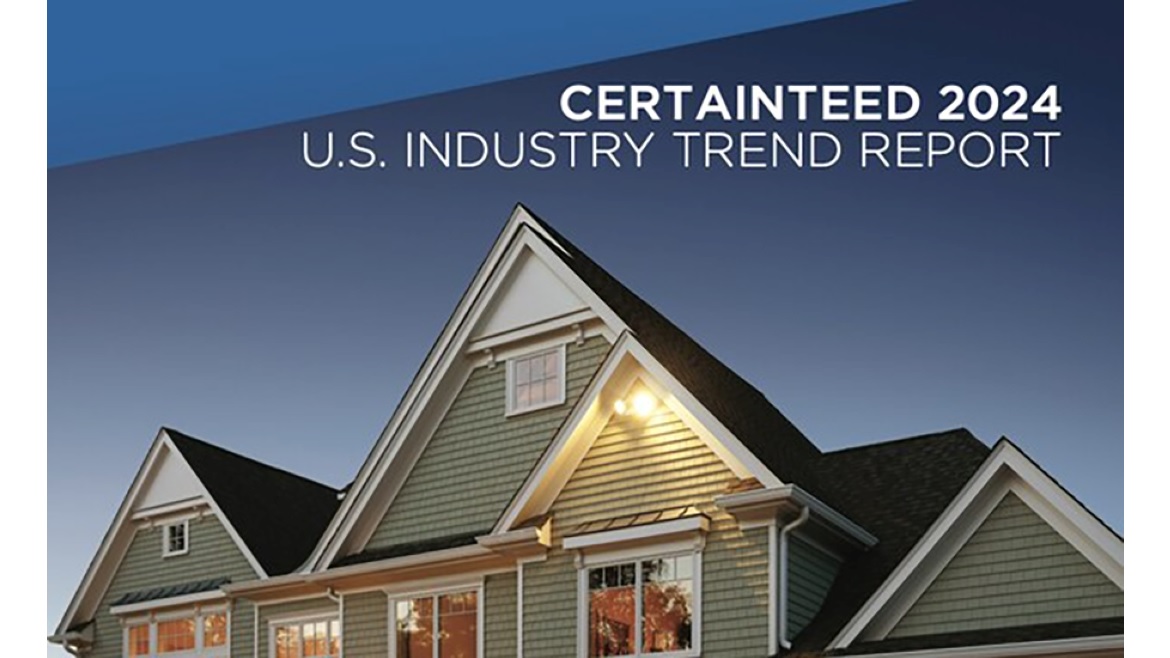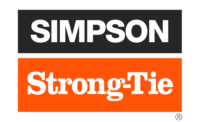On Feb. 27, CertainTeed launched its U.S. Industry Trend Report at the International Builders’ Show in Las Vegas.
To inform its findings, CertainTeed partnered with industry-leading market research firm Ipsos to survey industry professionals and homeowners across the country on home construction priorities from the inside out. Leading voices from the building industry were also consulted, including TV host and licensed contractor Josh Temple; Joe Christensen, founder and owner of Cardinal Crest; Tyler Grace, owner of TRG Home Concepts; and members of CertainTeed’s executive leadership. The result: a comprehensive look into data surrounding homebuilding and renovation trends, from building for extreme weather to investing in curb appeal to increasing the return on investment to sustainability and more.
The report is comprised of data generated from a survey completed by 702 U.S. adults ages 25 and older – 201 of which are professionals, including residential builders and contractors, and 501 are prospective homebuyers and homeowners who have made home renovations in the past five years and/or intend to do so in the next one to two years.
“We’re so pleased to be able to share our 2024 U.S. Industry Trend Report, which offers consumers and professionals direct access to valuable insights that are shaping the homebuilding and renovation industry today,” said Mark Rayfield, CEO of CertainTeed LLC and Saint-Gobain North America. “At CertainTeed, we are on the cutting edge of transforming how the industry builds by focusing on offering dependable, sustainable and innovative solutions. By better understanding the priorities and needs of our customers, we will increasingly be able to deliver products that outperform expectations over time.”
The CertainTeed U.S. Industry Trend Report provides a comprehensive look into upcoming trends in homebuilding and renovation. The key trends and findings, according to the report, include:
Building for Extreme Weather
- The shift in extreme weather is real. Most surveyed homeowners (70 percent) and professionals (86 percent) have noticed a change in the past two years – an unsettling reality, as fewer than half (48 percent) of these consumers who have noticed weather changes are very confident in their home’s ability to endure extreme weather.
- While priorities vary regionally, when selecting building materials with extreme weather in mind, durability is top of mind for both consumers (58 percent) and professionals (58 percent).
Building for Wellness Where it Matters Most
Healthy homes start with how we build – from drywall to insulations to siding. These solutions work together to become a barrier between people and the environment. Now more than ever, it must stand up to tremendous environmental pressures.
- Of those surveyed, nearly six out of 10 residential builders and contractors and nearly half of consumers agree that their home contributes to their health and well-being.
- Additionally, 40 percent of consumers view products using non-toxic materials as a priority when renovating or building their home’s exterior, along with 46 percent of professionals.
Behind the Renovation – Priorities from the Inside Out
- When it comes to top priorities when renovating, 72 percent of professionals and 67 percent of consumers surveyed agreed roofing tops the list, followed by insulation and siding, as well as products that are durable and built to last.
- Notably, millennials surveyed are far more likely to prioritize factors others do not, such as increased comfort, ease of installation and sustainability of manufactured materials.
Prioritizing Upgrades for a Stronger ROI
- Surveyed consumers and trade professionals agree that building insulation, roofing and siding have the greatest perceived return on investment. In fact, the home updates that are top of mind for consumers when it comes to increasing the ROI of their home are roofing (34 percent), solar roofing systems (21 percent), building insulation (20 percent), siding (14 percent) and exterior trim (10 percent).
The Art of Curb Appeal
- With only 38 percent of homeowners surveyed reporting that they are “very satisfied” with the current curb appeal of their home, many will prioritize upgrades to fall in love with their existing homes again.
- When it comes to the exterior color palette of their homes, consumers in the survey are loving light gray (30 percent), hues inspired by nature (27 percent), warm hues/the return of brown (23 percent), neutrals on neutrals (22 percent) and more color options.
- Millennials in this survey are more drawn to Modern Farmhouse style, while Generation X and boomers favor the Classic Traditional style.
Embracing Sustainability – For Today and Tomorrow
- Millennial respondents are a driving force for a sustainable future. They are more likely to view sustainability factors as high priorities compared to older respondents, such as products that are made with materials that are responsibly sourced (44 percent of millennials, compared to 28 percent of Generation X and 19 percent of boomers).
- When considering a brand of building materials, 54 percent of professionals and 40 percent of consumers agree that sustainability is an important quality.
- Sustainability has influence over purchase decisions for residential builders and contractors, with 49 percent preferring to buy from companies that sell sustainable products.
The Future is Solar
Integrating solar power into homes is essential in the movement toward clean, renewable energy usage. Energy cost savings is the top perceived benefit, according to consumers in the survey. However, the top barriers to solar roofing include concerns of system durability in extreme weather, up-front costs and maintenance/cleaning requirements.
- While those surveyed identify similar benefits and barriers, 47 percent of residential builders and contractors are very likely to consider solar roofing systems, compared to only 27 percent of consumers.
- The data varies regionally as well, with consumers surveyed in the South (37 percent) and West (30 percent) more likely to consider solar roofing than those in the Midwest (24 percent) and Northeast (14 percent).
To view the full report and its findings, click here.




